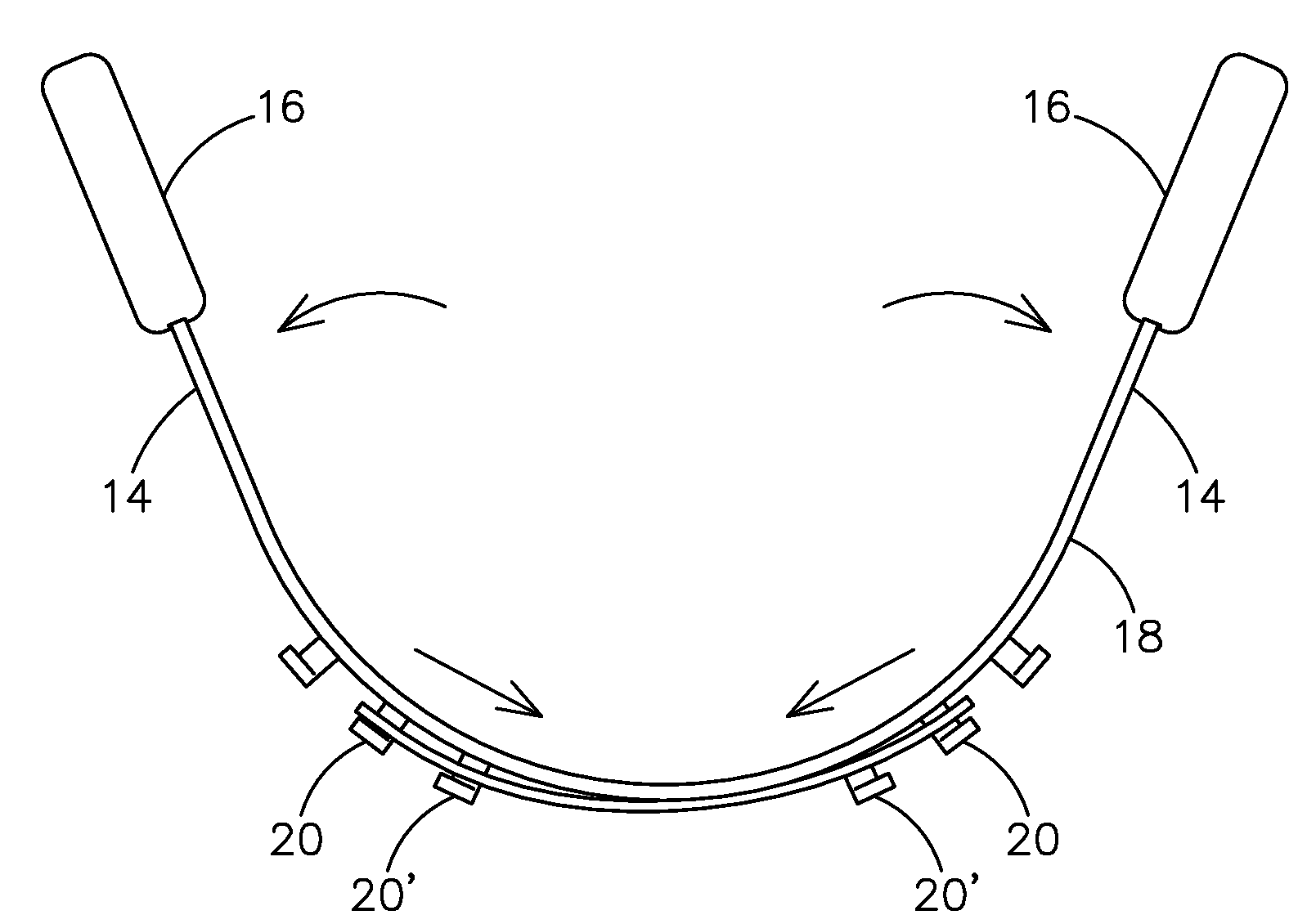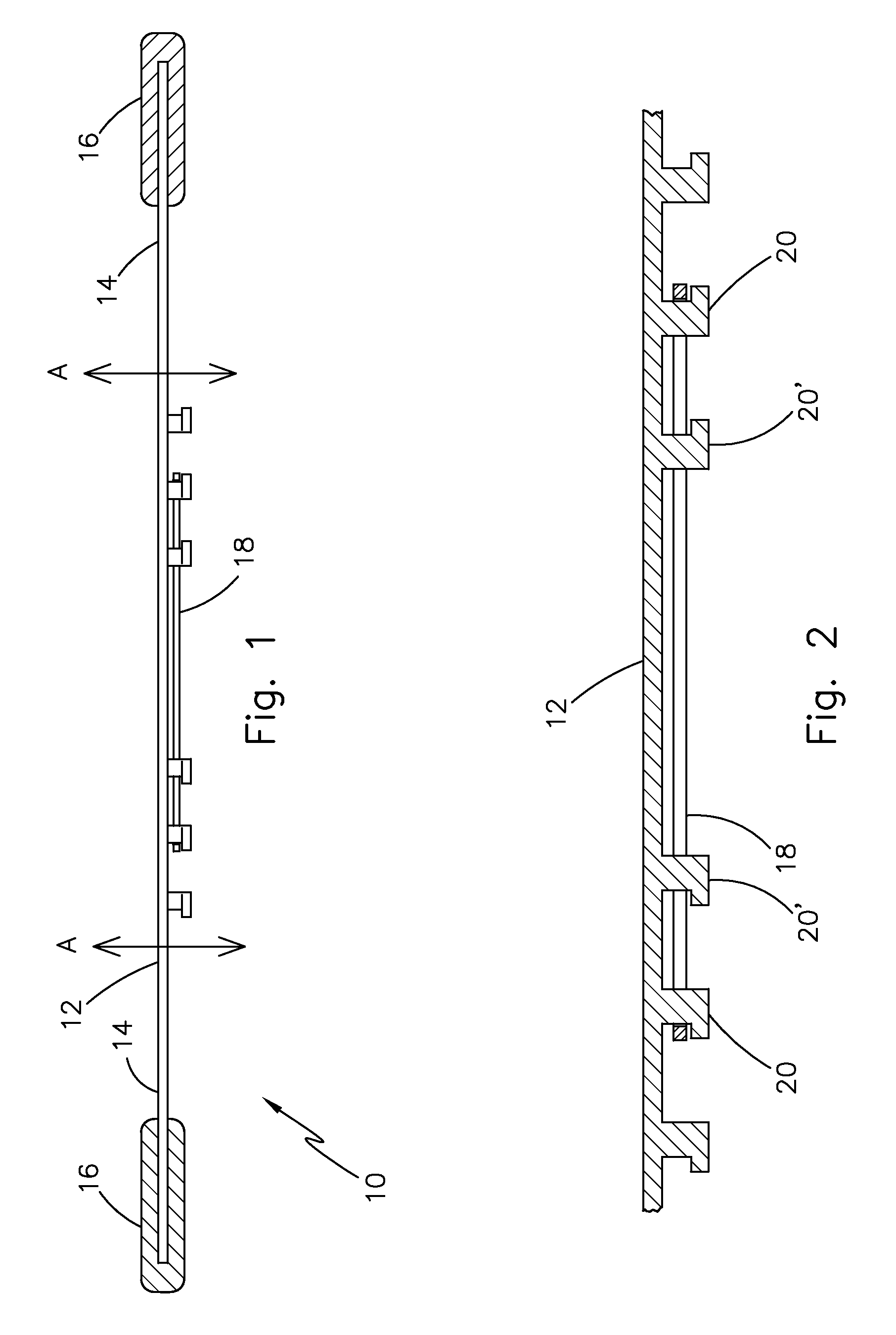Nostril dilator
a nasal dilator and dilator technology, applied in the field of nasal dilators, can solve the problems of lack of user modulation, limited amount of external devices, lack of constant pressure of thorner and slater patents, etc., and achieve the effect of constant pressure on the nostrils and relief from nasal congestion
- Summary
- Abstract
- Description
- Claims
- Application Information
AI Technical Summary
Benefits of technology
Problems solved by technology
Method used
Image
Examples
Embodiment Construction
[0032]The preferred embodiment of the internal nasal prosthesis (10) of this invention is depicted in FIG. 1. The basic configuration of the prosthesis has three, and preferable four, basic elements:[0033]a resilient flexible bow (12) which preferably comprises a planar strip of plastic material capable of bending and taking the shape of a “V” or “U”.[0034]an appendage (14) on each end of the bow, preferably comprising a tubular member, of an internal diameter sufficient to be fitted on each end of the bow;[0035]a pair of pads (16), or cushioning elements, on the free end of each of the appendages, for engagement of the surface of the internal nasal passages of an individual; and,[0036]a tensioning element or spreader (18, 18′), for engagement with one of more surface features, (e.g. détentes, holes and / or posts), so as to provide for incremental positioning (20, 20″) the tensioning element relative to the surface of the resilient flexible bow (12).
[0037]In practice, the bow (12) of...
PUM
 Login to View More
Login to View More Abstract
Description
Claims
Application Information
 Login to View More
Login to View More - R&D
- Intellectual Property
- Life Sciences
- Materials
- Tech Scout
- Unparalleled Data Quality
- Higher Quality Content
- 60% Fewer Hallucinations
Browse by: Latest US Patents, China's latest patents, Technical Efficacy Thesaurus, Application Domain, Technology Topic, Popular Technical Reports.
© 2025 PatSnap. All rights reserved.Legal|Privacy policy|Modern Slavery Act Transparency Statement|Sitemap|About US| Contact US: help@patsnap.com



